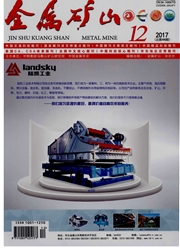

 中文摘要:
中文摘要:
基于流固耦合理论,采用有限元强度折减法对某尾矿库坝体的渗流稳定性进行了分析,计算出尾矿坝的抗滑安全系数并与尾矿坝相关规范推荐的瑞典条分法和Bishop方法计算结果进行了对比。结果表明:采用瑞典条分法和Bishop方法得出的临界滑动面与强度折减法得出的等效塑性应变贯通区的位置大致相同;采用强度折减法计算出的安全系数与以上2种极限平衡法的计算结果基本吻合。这说明采用有限元强度折减法求解尾矿坝抗滑安全系数是可行的;此外,有限元强度折减法得出的塑性贯通区位置可以为极限平衡法搜索临界滑移面提供初始滑动面,便于准确搜索临界滑移面的位置,同时大大减少了搜索工作量。
 英文摘要:
英文摘要:
Based on the fluid-solid coupling theory, the finite element strength reduction method was used to analyze the seepage stability characteristics of the tailing dam, and the safety factor was obtained the above analysis results were compared with the results by the Sweden slice method and Bishop method, and the results showed :The location of transfixion plastics-zone by the strength method was in accordance with the critical sliding surface by the Sweden slice method and the Bishop method. The safe factor by the strength method was very close to that by the Sweden slice method and the Bishop method. From the above results, the conclusion could be drawn that the strength reduction was viable to determine the safe factor of the tailing dam. Forthermore, the transfixion plastics-zone by the strength reduction could be regarded as the initial sliding surface for the limit equilibrium method to accurately search for the critical sliding surface, which was also helpful to reduce the computational complexity.
 同期刊论文项目
同期刊论文项目
 同项目期刊论文
同项目期刊论文
 Instability characteristics and stability analysis of a tailings dam based on fluid-solid coupling t
Instability characteristics and stability analysis of a tailings dam based on fluid-solid coupling t Amelioration of Wolffersdorff hypoplastic constitutive model considering intergranular strain tensor
Amelioration of Wolffersdorff hypoplastic constitutive model considering intergranular strain tensor 期刊信息
期刊信息
